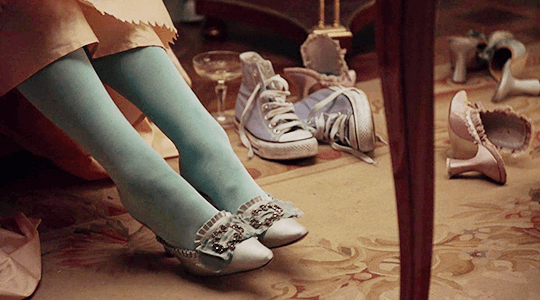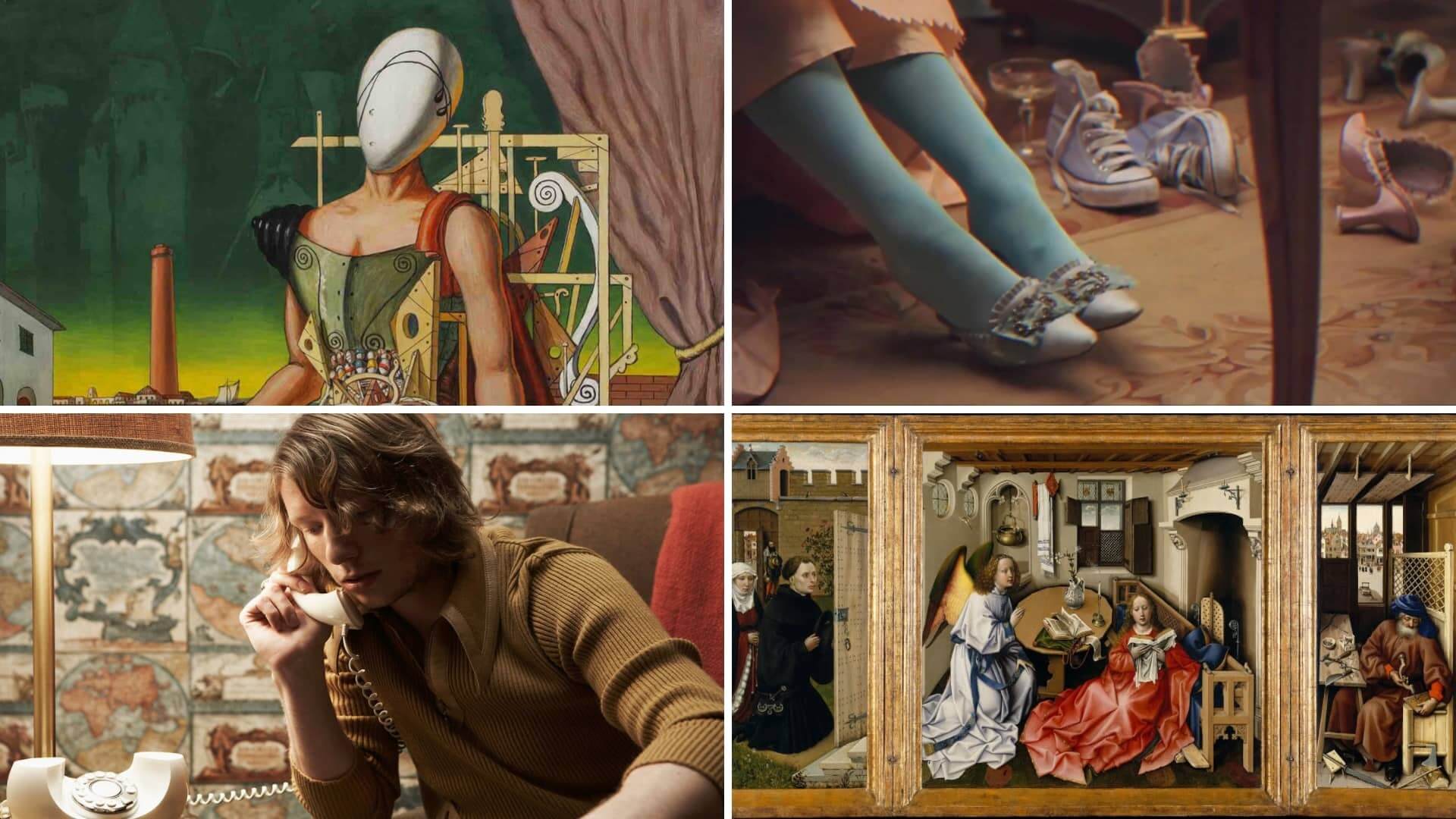You may have seen something out of time in a period piece, like machine guns in the Middle Ages. You may have come across a story where everyone in the 22nd century is still using 20th century technology. It’s the sort of thing you may notice immediately or not at all, depending on how subtle or obvious it is. It’s called anachronism and it has existed in art for many centuries. But what is anachronism, what does it look like, and how can you spot it? We will cover an anachronism definition, along with the different categories and examples.
Define Anachronism
Let's define anachronism
We of course can’t go too far without an anachronism definition, which will help prepare you for when we dig into the three main subcategories that exist.
ANACHRONISM DEFINITION
What is anachronism?
An anachronism is an intentional or unintentional chronological inconsistency. The phrase comes from the Greek and translates as "against time," which is fitting. It can be found in all forms of art, including paintings, literature, film, television, and video games. The element that causes an anachronism can be a person, object, phrase, event, or anything else that causes an inconsistency. The reason for the anachronism can vary depending on the intention, resulting in a variety of types and examples.
Anachronism examples:
- Using modern music in a period piece
- Having characters use language from a different era
- Bending historical timelines for narrative or dramatic purposes
It should be said that explaining anachronisms, their types, and examples can be tricky due to how prevalent and widespread the practice is. One can spend an extended time explaining it and all the examples that exist or they can narrow their focus to only include one type of art form (or one type of anachronism). For our purposes, we will cover the three main types of anachronisms in the next section, with examples. Afterward, we will cover notable examples from film and television.
Anachronism Meaning
The Three Types of Anachronisms
There are three types of anachronisms: parachronism, prochronism, and behavioral and cultural anachronism.
Parachronism
This is when something is in a time period it would normally not be found in. Unlike other types of anachronism, parachronism is doable in real life, as it simply moves something from the past into the present or future.
One of the best examples of parachronism can be found in Jared Hess’s Napoleon Dynamite (2004), which for all intents and purposes is set between 2004-2005, but may as well be set in the 1980s and/or ‘90s, since all the technology, outfits, and hairstyles are more in line with the late 20th century.
Many ways to define anachronism in Napoleon Dynamite
Prochronism
This is when something from the future exists in a setting where it has yet to exist. This would be an anachronism which is impossible to replicate or find in real life (unless you time travel).
Alex Cox’s Walker (1987) is a great example of a film that uses prochronism, as the film is set in the 19th century but has 20th century items scattered throughout. This is done to show how American politics and foreign policy (and intervention in the name of democracy) in the 1850s mirrors that of the 1980s.

What is anachronism in Walker
Behavioral and Cultural Anachronism
This is similar to parachronism, except, as the name might suggest, it is more specific to behavior or culture. This could be specifically tied to a character or something a character does that is not common in the setting’s time period.
Philip Marlowe in Robert Altman’s adaptation of The Long Goodbye (1973) (one of the best neo-noirs around) is an example of this. Marlowe acts and dresses like it’s still the 1950s (and he still drives an old Lincoln Continental) while everyone else in the film is very much living in the present (the early 1970s).
Anachronism example in The Long Goodbye
While these are specific types, anachronisms of all kinds show up in art and media. The ones listed above are but a taste of the sorts of anachronisms you can find in film and television.
Anachronism in Movies
Anachronism in Film and TV
There are too many anachronisms in film and TV to count them all, but some are more notable than others. That said, it should also be understood the level of anachronism that some examples have. A Starbucks cup in an episode of Game of Thrones is more of a goof than an actual anachronism (especially for a series set in a fictional world).
Converse sneakers showing up in Sofia Coppola’s Marie Antoinette (2006) are a better (intentional) example.

What is anachronism • Anachronism meaning
Below we’ll run over some prime examples of anachronisms in film and television. But don’t be fooled, these are just some of the more well-known examples, as anachronisms big and small can be found all over.
Film
The Indiana Jones franchise (which includes some of Steven Spielberg’s best movies) is full of anachronisms big and small. They stand out primarily due to each film being set in a specific time period. While the movies are fanciful and pulpy — meaning some of these anachronisms are likely intentional — fans still have no problem pointing out each and every inaccuracy in these movies.
Many of these are things most audiences would not notice, such as vehicles and weapons. This includes events like the Bebelplatz book burning of 1933 (as depicted in The Last Crusade), which already happened by the time we see it in the movie’s 1938 setting.
What is anachronism • Anachronism example
Another notable film to use intentional anachronism is A Knight’s Tale (2001). Set in the 14th century, it mainly sticks to being accurate with its setting, characters, and language.
However, it uses 20th century rock music for its soundtrack, and not just non-diegetically. For example, the opening scene has a crowd do the footstomp from Queen’s “We Will Rock You,” which most definitely counts as a prochronism.
What is anachronism • Anachronism definition
Some animated Disney films have also dabbled with intentional anachronism for the sake of comedy. The Emperor’s New Groove (2000), set during the Inca empire, is an extreme example, as it has plenty of 20th century trappings, such as lab coats, trampolines, and diners, all for laughs.
What is anachronism • Anachronism example
Television
That ‘70s Show is an interesting example of a show with anachronisms, as it is obviously a period piece set between 1976 and 1979, but it is also a comedy more concerned with laughs than facts. Some examples here include the use of Journey song from the next decade (“Any Way You Want It”), the existence of Krispy Kreme donuts (not to be found in the show’s real life setting of Wisconsin at the time), the existence of Rainbow Brite (an ‘80s property), and the mentioning of Six Flags (which went by a different name in the ‘70s).
On the other end is Mad Men, a super serious show set mostly in the 1960s advertising world that has been praised for its accuracy to the setting. For one thing, series protagonist Don Draper coins the famous Lucky Strike slogan “It’s toasted” in the pilot episode…except, in real life, that slogan had been around for decades.
What is anachronism • Define anachronism
More egregious would be the obvious product placement in the second season where Heineiken is a client and Don is serving it at dinner. While Heneiken existed in the ‘60s, the episode shows the beer in its more 21st century look of a green bottle (and the bottle shape used at the the time of the episode’s airing).
One other thing many shows like Mad Men and others do is not use time accurate vernacular. This is sometimes inevitable, especially since some period shows or movies are often reflections of the times they were made in. That said, a few shows and movies do avoid this type of anachronism, but they’re not nearly as common.
Plenty of other movies and shows have had anachronisms and that’s not going to change. As long as people keep making stories set in time periods that are not their own, there will always be anachronisms, good or bad, intentional or otherwise. But we always have the choice to either go with the anachronisms or let them get in the way of our enjoyment.
Examples in Literature
Anachronism examples in literature
Anachronisms in literature might be harder to catch but they are certainly there. Shakespeare is known for many either intentional or unintentional anachronisms. For example, in Julius Caesar, the title character is described wearing a "doublet," which is a type of jacket that was popular in the Bard's lifetime but did not exist in Caesar's.
In Mark Twain's satire, A Connecticut Yankee in King Arthur's Court takes this concept of anachronism to the extreme. His lead character is somehow transported back to England centuries earlier and uses his knowledge of the future to attempt social change.
Stephen King's Dark Tower series follows its protagonist Roland on a quest to save the titular tower, which is the nexus of all worlds. As the separation between these worlds grows thin, elements are shared between them despite their apparent anachronisms. For example, in a saloon that we would recognize from "the Old West," the piano player hammers out a version of The Beatles' "Hey Jude."
Related Posts
Up Next
What is a Period Piece?
Now that you know a thing or three about anachronisms, why not look over what makes a period piece? Our article covers period pieces in-depth, with examples and definitions that you can take with you when you watch or make your own.
